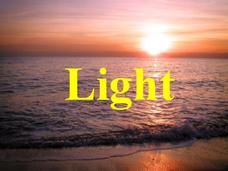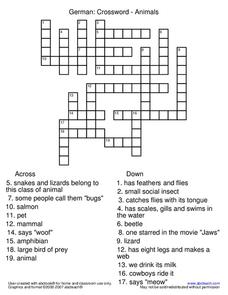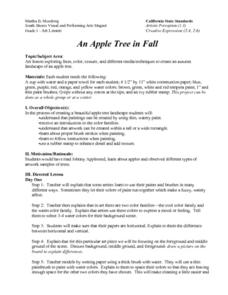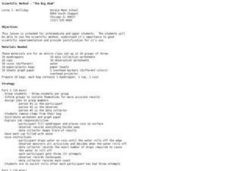Curated OER
Biocomplexity Lab Activity: Measuring Water pH
Young scholars test unknown solutions for pH levels to determine which organism can live in each environment. They name three substances that they think are acids. Students determine a solution is an acid or base. They define the term pH.
Towson University
The Crucial Concentration
Which sports drink provides the best pick-me-up after the big game or grueling workout? It may not be the one you'd think! Food science is the focus in a surprising lab activity. Pupils use colorimetry to determine the amount of protein,...
Curated OER
The Elements of Art Through Photography
Fifth graders photograph examples of the five elements of art: line, shape, color, pattern, and composition.
Curated OER
Fall 2003 Midterm Exam #3
Let there be light! When your physics learners take this midterm exam, light will be their focus. They will show what they know about electromagnetic waves, interference, refraction, reflection, lenses, prisms, and more! The test is...
Curated OER
Light
Here is a stellar slide show for illuminating middle schoolers' minds on the topic of light! An interactive slide allows viewers to sort light sources by whether or not they are man-made. More objects are displayed and learners discover...
abcteach
German Vocabulary Crossword Puzzles
What animals says meow, and which creature has eight legs? Test your German language learners' knowledge of animals with a quick crossword puzzle. Also included are eleven additional crossword puzzles with topics that range from food to...
Center for Learning in Action
Properties of Balls
Enhance your states of matter lessons with a hands-on science investigation that compares six different balls' color, texture, size, weight, ability to bounce, and buoyancy.
Curated OER
Understanding Waves
Students perform 3 hands-on activities to help them explain the terms "crest" and "trough" as related to sound, water, and light waves. All three waves types have troughs and crests. The activities use toys to demonstrate the properties...
Curated OER
An Apple Tree in Fall
First graders discover the two color families and how artists use the colors to express mood or feeling. Students paint pictures using water colors of an apple tree and include background, middle ground, and foreground in their scene.
Curated OER
Pointillist Portraits and More
Eighth graders discuss various medias and techniques artists use in portrait design. Using carbon paper and photos, 8th graders make four images on paper. They create portraits using felt tip pens, water colors, and colored pencils.
Curated OER
Capillary Action
Students experiment with capillary action. Capillary action enables soil moisture to move in any direction within the soil as water moves from wet areas to drier areas. Capillary rise of water occurs especially in and regions where...
Curated OER
Diffusion of Molecules
Students conduct a series of experiments to observe factors that impact molecular movement. For this molecular chemistry lesson, students drop food coloring in water with different properties (hot, with ice, with alcohol) and observe how...
Curated OER
How Sweet It is! A Colorful Sugar Solution Density Column
Students examine the affect of density. Using a graduated cylinder and equally prepared volumes of sugar-water solutions and food color, students observe a sugar rainbow. They discover that the greater the amount of sugar in the...
Curated OER
Leaf Chromatography
For this leaf chromatography worksheet, students separate the pigments of a leaf using paper chromatography. They answer 4 questions about their results and draw the colors they observe on their chromatogram from the leaf.
Curated OER
Indicators For Acids and Bases
Fourth graders compare the color of cabbage water when acids and bases are mixed in. In this acids and bases lesson plan, 4th graders use cabbage water and mix in acids and bases that the teacher prepares before hand. They observe the...
Curated OER
Color in Paintings
Students examine the color in paintings. In this visual arts lesson, students explore the 1821 painting by Jacques-Louis David and identify the colors in the art piece. Students write an original fairy tale and create an illustration...
Curated OER
Ocean Murals
Students identify characteristics of water. They describe the process by which light decreases and pressure increases as water depth increases. They demonstrate the principle of water pressure in a small group experiment.
Curated OER
Scientific Method- "The Big Ahah"
Students experiment with water, dropper and a coin to study the scientific method. In this scientific method lesson plan, students are in groups, each with a coin, water and a dropper. They investigate how many drops of water can fit on...
Curated OER
How Strong is the Solution
Students investigate the strength of solutions. For this scientific inquiry lesson plan, students examine various solutions of food color and water as they discover the concentration of the solutions by adding bleach to clear the color.
Curated OER
A Chemical Balancing Act
Students decompose glucose and write an equation for the reaction. In this decomposition reaction lesson plan, students burn a sample of glucose and test the products for water using cobalt chloride paper. They write a balanced equation...
Curated OER
Soil is a Filter
Students examine how to take the impurities out of eater. In this exploratory lesson students complete an experiment on how to filter drinking water.
Curated OER
Paper Chromatography K-12 Experiment
Students study chromatography and how they can distinguish between the different pigments in a color. In this chromatography lesson students separate a mixture of dyes in soluble ink then record the colors they see.
Curated OER
Physical and Chemical Change of Six White Substances
Students investigate chemical and physical changes in reactions. In this chemical and physical change lesson plan, students mix 6 different white substances with water, vinegar and iodine. They make hypotheses about each substance and...
Curated OER
A Piece of Cake: Ocean Communities
Students explain habitats. In this model based lesson plan students create a model to help describe a habitat that is typical of deep-water. Students will describe how organisms such as coral and sponges add to their habitat.

























